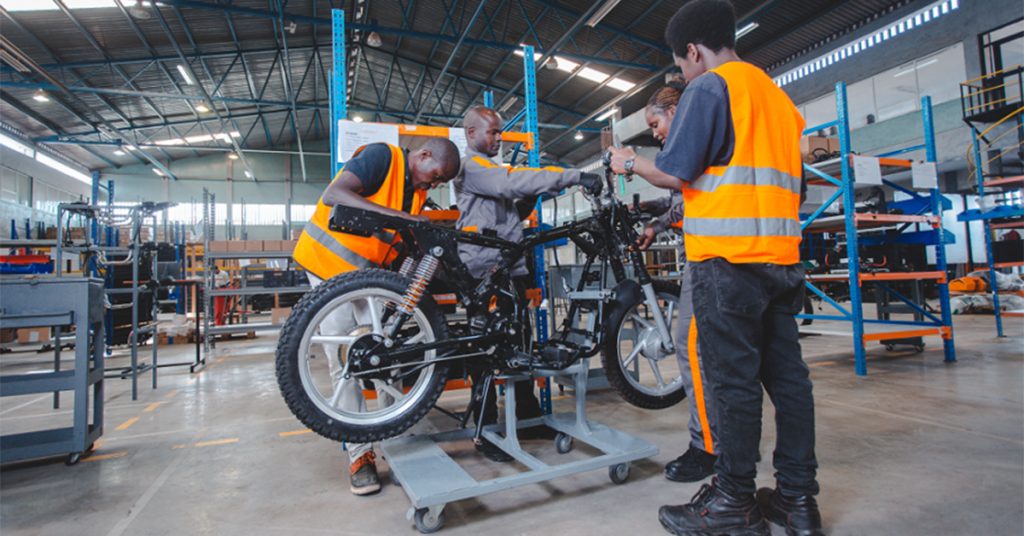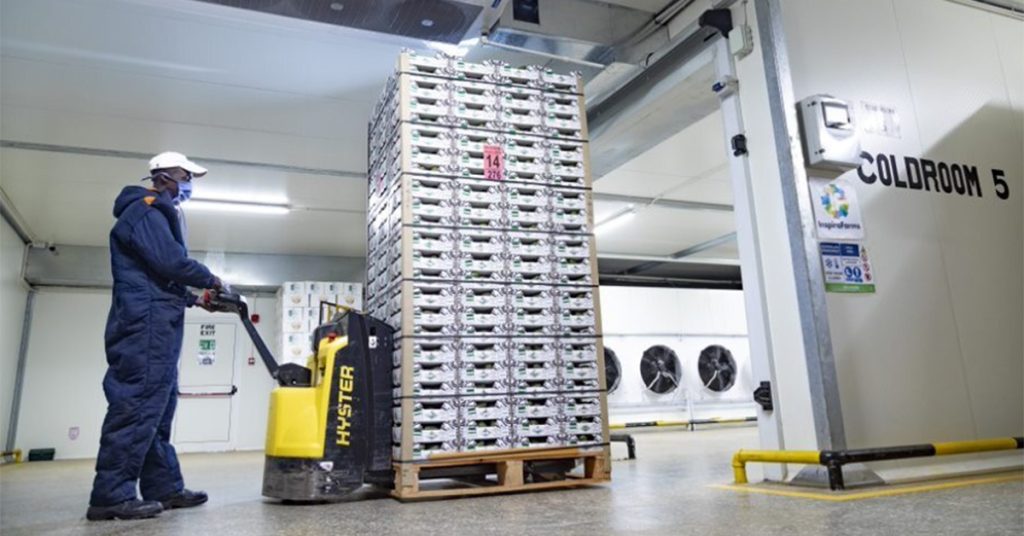

Across sub-Saharan Africa, renewable energy is moving steadily from household use into the productive core of local economies. Since 2019, the Powering Renewable Energy Opportunities (PREO) programme has both tracked and catalysed this transition, supporting clean energy enterprises that enable value creation across food systems, small businesses, logistics and digital services.
This article draws primarily on data from PREO’s 2025 Call for Proposals (CFP) and related application insights. Although we do not hold these up as definitive evidence of wider market activity, we believe that our observations provide a useful window into the evolving PURE enterprise landscape.
PREO’s commercial lens on impact
Funded by UK aid from the UK government via the Transforming Energy Access platform and by the IKEA Foundation, PREO operates with commercial discipline: rigorous selection, milestone-based performance criteria, and a clear path to investability. This approach mirrors impact venture capital but with a critical difference: catalytic grants of €100,000–€300,000 absorb early-stage risk that private investors cannot yet price, allowing founders to pilot models and generate evidence that crowds in commercial capital.
For 73% of PREO-supported firms, the programme was the first institutional funder, often providing the endorsement needed to unlock follow-on investment. Across the programme to date, for every euro of PREO capital which has been received by companies, five euros of private investment have been leveraged, demonstrating that structured de-risking at the pilot stage creates viable pathways to scale.
This success is a likely contributor towards the huge increase in applications that PREO’s 2025 CFP saw, compared to previous calls. The call drew 732 applications, of which 613 met our basic eligibility criteria. This was a 154% increase over the previous year and the largest year-on-year rise in PREO’s history.
In this piece, we share some headline themes that we see emerging from our application pool. We believe these to be indicative of a strengthening PURE sector, providing strong opportunities for investment and scale.
Five patterns shaping the PURE landscape
- Market consolidation around proven use cases
Five sectors accounted for 73% of all submissions to the 2025 CFP: agro-processing, energy for SMEs, solar irrigation, cooling and e-mobility. This clustering likely indicates sectors where early-stage entrepreneurs are finding demand and where investors may find sufficient deal flow to build thematic portfolios. The concentration also suggests that PURE is moving beyond scattered pilots toward repeatable, investable business models. - Energy for SMEs is growing fast
Applications in this segment grew nearly six-fold in comparison to PREO’s 2024 CFP, aligning with the wider availability of distributed power and storage. We observed that founders in this sector are increasingly targeting a reliable “grid-like” service for workshops, small businesses including service industry, and light manufacturing. - Local ownership deepens across the sector
The 2025 CFP saw 89% of applicants being majority locally owned, up from 80% the previous year. This shift may indicate that entrepreneurial capabilities of African entrepreneurs are expanding. As these firms scale, demand for growth capital and governance support across the continent can be expected to intensify, creating opportunities for blended finance and technical assistance providers. - A younger and faster-moving pipeline
Three-quarters of applicant companies were incorporated within the past decade. For example, 74% of e-mobility applicants were post-2020 start-ups, illustrating how quickly innovation cycles are shortening. The challenge ahead will be converting this dynamism into durable business models capable of surviving beyond early funding rounds. - Gender participation shows progress but remains far from parity
Only 27% of applications came from majority female-owned companies, with participation higher in the energy for SMEs and agro-processing sectors. Significant barriers remain for female participation, creating opportunities for dedicated funding windows, mentorship and network support.
Qualitative insights by sector

Energy for SMEs: rapid growth meets strategic gaps
The six-fold rise in applications to PREO reveals strong appetite but also recurring blind spots. We see many early-stage firms investing heavily in proprietary battery systems despite cost-competitive products from China and India. Scarce resources could be directed instead towards validating business models and customer economics, these being fundamentals that unlock investment and enable local manufacturing later.
Several proposals anchored business models on subsidy-dependent repayment schemes tied to social institutions such as clinics. A more durable path could be to focus on social sector clients capable of paying market-based tariffs, using grant support instead to underwrite pipeline development, credit risk assessment and blended finance pilots.
Large Solar Home Systems distributors are entering the SME power market with capital depth and established supply chains. Early-stage challengers could seek to differentiate by innovating around service design, demand aggregation, remote asset management and utility-like payment mechanics, rather than by attempting to out-engineer hardware incumbents.
Agriculture: towards integrated cutting-edge systems
For the first time at scale, applicants proposed precision systems for farms: IoT sensors, GPS-guided irrigation, controlled greenhouses, soil-pH and micro-climate monitoring adapted for African conditions. If executed with viable unit economics, these tools could lift yields and reduce post-harvest losses.
Equally significant is the shift in PREO applications from single product models to integrated value-chain solutions. Impact increases as more elements combine: solar water pump < pump + drip kit < pump + drip kit + input finance < pump + drip kit + input finance + market access < all of the above + agronomic support. Demand aggregators and integrated agribusinesses that bundle technology, finance and offtake consistently show stronger economics and farmer outcomes than hardware-only interventions.
Cooling: operational pivots require new capabilities
PREO has observed many solar installation companies pivoting to operate cold rooms or lease refrigeration assets to farmer groups and traders. This pivot recognises an underserved market but demands different skills, including post-harvest management, crop seasonality, aggregation logistics and working capital cycles. Strategic partnerships with agribusinesses, logistics providers and commodity traders are emerging as effective ways to bridge this capability gap. Most cooling proposals received by PREO now adopt Cooling-as-a-Service (CaaS) models rather than lease-to-own or pay-as-you-go structures. This shift from asset sales to service provision expands the market beyond potentially shallow ‘creditworthy’ segments, lowering barriers for small retailers, fish vendors and women-led enterprises focusing on perishable goods, while creating recurring revenues for operators.
Digital platforms knit together fragmented value chains
PREO has been an early mover in supporting digital-only models such as energy management Software-as-a-Service for mobility fleets and online trading platforms for agricultural produce. The 2025 CFP showed this digital wave expanding into cooling, circular economy and production domains.
In agriculture, platforms now connect farmers directly to bulk buyers, retailers and processors, integrating with energy-enabled cold storage. New online marketplaces are emerging for second-life and refurbished PURE appliances, linking recyclers, equipment suppliers and last-mile distributors. These digital ecosystems are beginning to integrate previously fragmented elements of the productive-use value chain, creating more transparent, data-driven foundations for scale.
From pilot stage to investment readiness

The 2025 applicant pool points to a sector gaining definition and structure. Founders are professionalising, data quality is improving, and investable opportunities are concentrating in areas where replication is feasible.
Looking ahead, models proven through PREO, such as energy-for-SME platforms, Cooling-as-a-Service, integrated agricultural solutions, digital marketplaces, will continue to demonstrate both commercial traction and measurable impact. Yet many operate at the frontiers of affordability, infrastructure gaps and evolving regulation.
This is precisely where structured de-risking capital plays its most catalytic role. PREO’s blended finance approach demonstrates that concessional and commercial capital need not coexist within single transactions. Donor funding enters first to absorb pilot stage risk, enabling enterprises to validate models and strengthen business cases. Once performance data is established, private investment follows on commercial terms.
As the PURE sector matures, the next phase of opportunity lies in tighter coordination between early-stage programmes like PREO and the growth stage investors, venture funds and local financial institutions positioned to provide follow-on capital. For investors seeking climate solutions with demonstrated viability, measurable impact and established track records, the PURE ecosystem offers a frontier that is both ready and rapidly expanding.
For further data on the applications, see our analysis of headline trends.
Find out which companies were selected to take part in Wave 6 of PREO.